#monk 2002 text post
Explore tagged Tumblr posts
Text
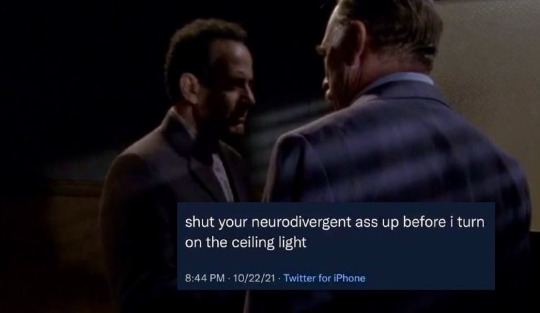



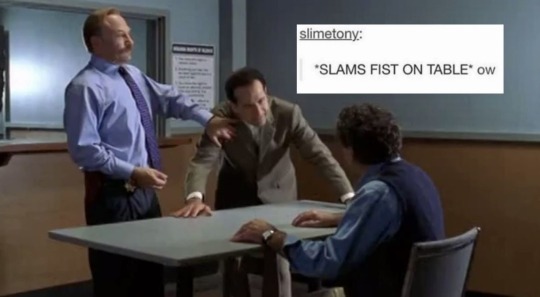
our ☀️🌙 boys
#monk 2002#adrian monk#leland stottlemeyer#monk 2002 text post#stottlemonk#stottlemeyer x monk#text post
631 notes
·
View notes
Text



moon and stars or something
#text posts#monk 2002 text post#monk 2002#stottlemonk#adrian monk#leland stottlemeyer#stottlemeyer x monk
94 notes
·
View notes
Text



















some Monk shitposts for y'all to enjoy, tag urself i'm leland
#shitpost#shitposting#mine#text posts#monk#adrian monk#leland stottlemeyer#randy disher#sharona fleming#natalie teeger#meme#memes#monk tv show#monk 2002#my post#my edit#stottlemorgan
291 notes
·
View notes
Text
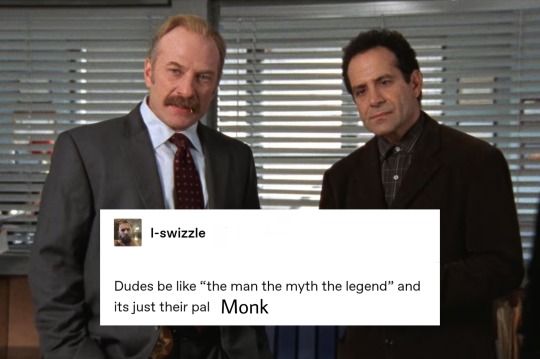
Leland Stottlemeyer is Monk's #1 fan ( ◜‿◝ )♡
#Something about admiring your best friend so deeply it looks like you're longing for him#stottlemonk#Monk (2002)#i love it when either sharona natalie or leland say something like “you've probably heard of monk. he's a famous detective”#and people are genuinely confused lmao#adrian monk is some guy and i love him so much:)#text post
139 notes
·
View notes
Text
...save me objectively mediocre tv shows from the early 2000s.... save me....
#psych 2006#monk 2002#merlin 2008#actually many more but those r the ones im thinking abt rn ok#text post
24 notes
·
View notes
Text
I've been summoned by @artielu to vet this post, and I'm happy to confirm that it is, in fact, fairly accurate and does represent many of the ways in which medieval people did (and did not) think about gender, witchcraft, religion, magic, and practice. I've written quite a bit on this topic before, probably back when I was teaching a class on magic and the supernatural in the Middle Ages, but it's been a while.
The boring stereotypical Bad Middle Ages take is that medieval people were all howling misogynists and thus were burning Female Witches (and also midwives, out of an idea that medieval people saw all female-led intellectual practice as inherently bad, which is also uh, questionable) at the stake left and right. As I have carped about many times, Witch Trials (TM) as most people think of them were decidedly an early modern invention. The idea of witchcraft as both a) real and b) specifically and evilly female was also in fact a very late medieval invention; it was most explicitly codified in the infamous Malleus maleficarum of 1485. However its author, Heinrich Kramer, was already a raging misogynist and had been chased out of his parish the year before when for some reason, people got tired of him randomly accusing their wives and daughters of witchcraft. The Malleus is well known as a "witch hunting handbook," but people then tend to generalize its late 15th-century conclusions, written by one tiresome misogynist, as completely representative of The Middle Ages Everywhere. The Malleus also contains some anti-sodomitic polemicals, so there are just a whole stew of gender, queer, and other anxieties being represented here in a late medieval context. See i.e.:
Bailey, M. D., ‘From Sorcery to Witchcraft: Clerical Conceptions of Magic in the Middle Ages’, Speculum, 76 (2001), 960-90.
Bailey, M.D., ‘The feminization of magic and the emerging idea of the female witch in the late Middle Ages’, Essays in Medieval Studies 19 (2002), 120-134
Broedel, H.P., 'To preserve the manly form from so vile a crime: ecclesiastical anti-sodomitic rhetoric and the gendering of witchcraft in the Malleus Maleficarum', Essays in Medieval Studies 19 (2002), 136-148
Broedel, H.P., The Malleus Maleficarum and the Construction of Witchcraft: Theology and Popular Belief (Manchester: Manchester University Press, 2003)
Harley, D. ‘Historians as Demonologists: The Myth of the Midwife-Witch’, Social History of Medicine, 3 (1990), 1-26
Katajala-Peltomaa, S. ‘A good wife? Demonic Possession and Discourses of Gender in Late Medieval Culture’, in Gender in Late Medieval and Early Modern Europe, ed. by M.G. Muravyeva and R.M. Tovio (New York, NY: Routledge, 2013), pp. 73-88
Stephens, W., ‘Witches who steal penises: impotence and illusion in the Malleus Maleficarum’, Journal of Medieval and Early Modern Studies 28 (1998), 495-529
It's true that some of the most dedicated practitioners of ritual magic, and scholars and conservationists of magical texts, were monks, churchmen, and other religious figures. Some of them started from the position that God possessed the only supernatural power and any claim of other magic was wrong, but many others did believe that magical power was accessible from a variety of sources, even as this interacted uneasily with related notions of heresy, religion, blasphemy, and (demonic) sin. This represented the complex and shifting interaction between institutional Catholic and traditional/folk magic beliefs, which were never fully assimilated or "erased." It was in fact also popular among laypeople, as magical amulets or charms were highly valued for their supposedly protective capacities. Magic and ritual magic was also widely used in medicine and yes, for sex (people have always been people etc. etc.). See i.e.:
Bailey, M. D., Battling Demons: Witchcraft, Heresy and Reform in the Later Middle Ages (University Park, PA: Pennsylvania State University, 2003)
Boureau, A., Satan the Heretic: The Birth of Demonology in the Medieval West, trans. by Teresa Lavender Fagan (Chicago, IL: University of Chicago, 2006)
Collins, D., ed., Cambridge History of Magic and Witchcraft in the West (New York, NY and Cambridge: Cambridge University Press, 2015)
Fanger, C., ed. Conjuring Spirits: Texts and Traditions of Medieval Ritual Magic (Stroud: Sutton, 1998)
Flint, V. I. J., The Rise of Magic in Early Medieval Europe (Oxford: Oxford University Press, 1991)
Kieckhefer, R., Magic in the Middle Ages (Cambridge: Cambridge University Press, 2000)
Kieckhefer, R. ‘Erotic Magic in Medieval Europe’, in Sex in the Middle Ages, ed. by J. Salisbury (London and New York, NY: Garland, 1991), 30-55
Olsan, L.T., ‘Charms and Prayers in Medieval Medical Theory and Practice’, Social History of Medicine, 16 (2003), 343-66
Page, S. Magic in the Cloister: Pious Motives, Illicit Interests and Occult Approaches to the Medieval Universe (University Park, PA: Pennsylvania State University, 2013)
Rider, C. ‘Danger, stupidity and infidelity: magic and discipline in John Bromyard’s Summa for Preachers’, Studies in Church History, 43 (2007), 191-20
I could go on with quite a bit more, but the point is: there is an extensive scholarly literature on this topic, and any depiction of magical and supernatural beliefs in the Middle Ages, especially in popular media, is often the laziest imaginable shorthand for "they all hated women, thought they were witches, and burned anyone who didn't believe in the all-powerful Catholic church." Yet again, this also does vary by time period, as The Middle Ages are not one single undifferentiated block. A twelfth-century author is far more likely to scoff at the credulous fools who think magic is real or can actually compare to the power of God, whereas the early-modern authors, influenced by Kramer, will do far more of the stereotypical "witchcraft is a particularly female-gendered thing and also real, satanic, and evil." And yes, many medieval magic practitioners and enthusiasts were a) monks and the church and b) regular people, because it occupied a complex place in their belief system and was by no means simply evil. This doesn't mean that they were "more" or "less" enlightened according to the also-wildly-erroneous Scale of Perceived Human Progress, but just that they were complicated, stereotypes are stupid, and my kingdom for one (1) single nuanced, thoughtful, or remotely accurate depiction of this in medieval-themed media. The end.
I understand why a lot of fantasy settings with Ambiguously Catholic organised religions go the old "the Church officially forbids magic while practising it in secret in order to monopolise its power" route, but it's almost a shame because the reality of the situation was much funnier.
Like, yes, a lot of Catholic clergy during the Middle Ages did practice magic in secret, but they weren't keeping it secret as some sort of sinister top-down conspiracy to deny magic to the Common People: they were mostly keeping it secret from their own superiors. It wasn't one of those "well, it's okay when we do it" deals: the Church very much did not want its local priests doing wizard shit. We have official records of local priests being disciplined for getting caught doing wizard shit. And the preponderance of evidence is that most of them would take their lumps, promise to stop doing wizard shit, then go right back to doing wizard shit.
It turns out that if you give a bunch of dudes education, literacy, and a lot of time on their hands, some non-zero percentage of them are going to decide to be wizards, no matter how hard you try to stop them from being wizards.
69K notes
·
View notes
Text
Banksy in Boston: Overview of the NO LOITRIN piece on Essex St in Central Square, Cambridge
Posted via email to ☛ HoloChromaCinePhotoRamaScope‽: cdevers.posterous.com/banksy-no-loitrin.
• • • • • • • • • •
Interestingly, both of the Boston area Banksy pieces are on Essex St:
• F̶O̶L̶L̶O̶W̶ ̶Y̶O̶U̶R̶ ̶D̶R̶E̶A̶M̶S̶ CANCELLED (aka chimney sweep) in Chinatown, Boston • NO LOITRIN in Central Square, Cambridge.
Does that mean anything? It looks like he favors Essex named streets & roads when he can. In 2008, he did another notable Essex work in London, for example, and posters on the Banksy Forums picked up & discussed on the Essex link as well.
Is there an Essex Street in any of the other nearby towns? It looks like there are several: Brookline, Charlestown, Chelsea, Gloucester, Haverhill, Lawrence, Lynn, Medford, Melrose, Quincy, Revere, Salem, Saugus, Somerville, Swampscott, and Waltham. Most of these seem improbable to me, other than maybe Brookline, or maybe Somerville or Charlestown. But they start getting pretty suburban after that.
But, again, why "Essex"? In a comment on this photo, Birbeck helps clarify:
I can only surmise that he’s having a ‘dig’ at Essex UK, especially with the misspelling of ‘Loitering’. Here, the general view of the urban districts in Essex: working class but with right wing views; that they’re not the most intellectual bunch; rather obsessed with fashion (well, their idea of it); their place of worship is the shopping mall; enjoy rowdy nights out; girls are thought of as being dumb, fake blonde hair/tans and promiscuous; and guys are good at the ‘chit chat’, and swagger around showing off their dosh (money).
It was also the region that once had Europe’s largest Ford motor factory. In its heyday, 1 in 3 British cars were made in Dagenham, Essex. Pay was good for such unskilled labour, generations worked mind-numbing routines on assembly lines for 80 years. In 2002 the recession ended the dream.
• • • • •
• This is a scan of this Banksy photo running in the the Boston Globe on May 13, 2010. This is the first time I’ve made the newspaper with one of my photos 🙂 (The Globe later ran a longer article, titled Tag — we’re it: Banksy, the controversial and elusive street artist, left his mark here. Or did he? with a photo taken by one of their staff photographers, Essdras M. Suarez.
• This photo appeared on Grafitti – A arte das ruas on Yahoo Meme. Yes, Yahoo has a Tumblr/Posterous-esque "Meme" service now — I was as surprised as you are.
• The photo has also appeared, among other places, on CafeBabel, a European online affairs magazine based in Paris.
• • • • •
Banksy From Wikipedia, the free encyclopedia
Banksy • Birth name Unknown
• Born 1974 or 1975 (1974 or 1975), Bristol, UK[1]
• Nationality British
• Field Graffiti Street Art Bristol underground scene Sculpture
• Movement Anti-Totalitarianism Anti-capitalism Pacifism Anti-War Anarchism Atheism Anti-Fascism
• Works Naked Man Image One Nation Under CCTV Anarchist Rat Ozone’s Angel Pulp Fiction
Banksy is a pseudonymous[2][3][4] British graffiti artist. He is believed to be a native of Yate, South Gloucestershire, near Bristol[2] and to have been born in 1974,[5] but his identity is unknown.[6] According to Tristan Manco[who?], Banksy "was born in 1974 and raised in Bristol, England. The son of a photocopier technician, he trained as a butcher but became involved in graffiti during the great Bristol aerosol boom of the late 1980s."[7] His artworks are often satirical pieces of art on topics such as politics, culture, and ethics. His street art, which combines graffiti writing with a distinctive stencilling technique, is similar to Blek le Rat, who began to work with stencils in 1981 in Paris and members of the anarcho-punk band Crass who maintained a graffiti stencil campaign on the London Tube System in the late 1970s and early 1980s. His art has appeared in cities around the world.[8] Banksy’s work was born out of the Bristol underground scene which involved collaborations between artists and musicians.
Banksy does not sell photos of street graffiti.[9] Art auctioneers have been known to attempt to sell his street art on location and leave the problem of its removal in the hands of the winning bidder.[10]
Banksy’s first film, Exit Through The Gift Shop, billed as "the world’s first street art disaster movie", made its debut at the 2010 Sundance Film Festival.[11] The film was released in the UK on March 5.[12]
Contents
• 1 Career •• 1.1 2000 •• 1.2 2002 •• 1.3 2003 •• 1.4 2004 •• 1.5 2005 •• 1.6 2006 •• 1.7 2007 •• 1.8 2008 •• 1.9 2009 •• 1.10 2010 • 2 Notable art pieces • 3 Technique • 4 Identity • 5 Controversy • 6 Bibliography • 7 References • 8 External links
Career
Banksy started as a freehand graffiti artist 1992–1994[14] as one of Bristol’s DryBreadZ Crew (DBZ), with Kato and Tes.[15] He was inspired by local artists and his work was part of the larger Bristol underground scene. From the start he used stencils as elements of his freehand pieces, too.[14] By 2000 he had turned to the art of stencilling after realising how much less time it took to complete a piece. He claims he changed to stencilling whilst he was hiding from the police under a train carriage, when he noticed the stencilled serial number[16] and by employing this technique, he soon became more widely noticed for his art around Bristol and London.[16]
Stencil on the waterline of The Thekla, an entertainment boat in central Bristol – (wider view). The image of Death is based on a 19th century etching illustrating the pestilence of The Great Stink.[17]
Banksy’s stencils feature striking and humorous images occasionally combined with slogans. The message is usually anti-war, anti-capitalist or anti-establishment. Subjects often include rats, monkeys, policemen, soldiers, children, and the elderly.
In late 2001, on a trip to Sydney and Melbourne, Australia, he met up with the Gen-X pastellist, visual activist, and recluse James DeWeaver in Byron Bay[clarification needed], where he stencilled a parachuting rat with a clothes peg on its nose above a toilet at the Arts Factory Lodge. This stencil can no longer be located. He also makes stickers (the Neighbourhood Watch subvert) and sculpture (the murdered phone-box), and was responsible for the cover art of Blur’s 2003 album Think Tank.
2000
The album cover for Monk & Canatella‘s Do Community Service was conceived and illustrated by Banksy, based on his contribution to the "Walls on fire" event in Bristol 1998.[18][citation needed]
2002
On 19 July 2002, Banksy’s first Los Angeles exhibition debuted at 33 1/3 Gallery, a small Silverlake venue owned by Frank Sosa. The exhibition, entitled Existencilism, was curated by 33 1/3 Gallery, Malathion, Funk Lazy Promotions, and B+.[19]
2003
In 2003 in an exhibition called Turf War, held in a warehouse, Banksy painted on animals. Although the RSPCA declared the conditions suitable, an animal rights activist chained herself to the railings in protest.[20] He later moved on to producing subverted paintings; one example is Monet‘s Water Lily Pond, adapted to include urban detritus such as litter and a shopping trolley floating in its reflective waters; another is Edward Hopper‘s Nighthawks, redrawn to show that the characters are looking at a British football hooligan, dressed only in his Union Flag underpants, who has just thrown an object through the glass window of the cafe. These oil paintings were shown at a twelve-day exhibition in Westbourne Grove, London in 2005.[21]
2004
In August 2004, Banksy produced a quantity of spoof British £10 notes substituting the picture of the Queen’s head with Princess Diana‘s head and changing the text "Bank of England" to "Banksy of England." Someone threw a large wad of these into a crowd at Notting Hill Carnival that year, which some recipients then tried to spend in local shops. These notes were also given with invitations to a Santa’s Ghetto exhibition by Pictures on Walls. The individual notes have since been selling on eBay for about £200 each. A wad of the notes were also thrown over a fence and into the crowd near the NME signing tent at The Reading Festival. A limited run of 50 signed posters containing ten uncut notes were also produced and sold by Pictures on Walls for £100 each to commemorate the death of Princess Diana. One of these sold in October 2007 at Bonhams auction house in London for £24,000.
2005
In August 2005, Banksy, on a trip to the Palestinian territories, created nine images on Israel’s highly controversial West Bank barrier. He reportedly said "The Israeli government is building a wall surrounding the occupied Palestinian territories. It stands three times the height of the Berlin Wall and will eventually run for over 700km—the distance from London to Zurich. "[22]
2006
• Banksy held an exhibition called Barely Legal, billed as a "three day vandalised warehouse extravaganza" in Los Angeles, on the weekend of 16 September. The exhibition featured a live "elephant in a room", painted in a pink and gold floral wallpaper pattern.[23] • After Christina Aguilera bought an original of Queen Victoria as a lesbian and two prints for £25,000,[24] on 19 October 2006 a set of Kate Moss paintings sold in Sotheby’s London for £50,400, setting an auction record for Banksy’s work. The six silk-screen prints, featuring the model painted in the style of Andy Warhol‘s Marilyn Monroe pictures, sold for five times their estimated value. His stencil of a green Mona Lisa with real paint dripping from her eyes sold for £57,600 at the same auction.[25] • In December, journalist Max Foster coined the phrase, "the Banksy Effect", to illustrate how interest in other street artists was growing on the back of Banksy’s success.[26]
2007
• On 21 February 2007, Sotheby’s auction house in London auctioned three works, reaching the highest ever price for a Banksy work at auction: over £102,000 for his Bombing Middle England. Two of his other graffiti works, Balloon Girl and Bomb Hugger, sold for £37,200 and £31,200 respectively, which were well above their estimated prices.[27] The following day’s auction saw a further three Banksy works reach soaring prices: Ballerina With Action Man Parts reached £96,000; Glory sold for £72,000; Untitled (2004) sold for £33,600; all significantly above estimated values.[28] To coincide with the second day of auctions, Banksy updated his website with a new image of an auction house scene showing people bidding on a picture that said, "I Can’t Believe You Morons Actually Buy This Shit."[6] • In February 2007, the owners of a house with a Banksy mural on the side in Bristol decided to sell the house through Red Propeller art gallery after offers fell through because the prospective buyers wanted to remove the mural. It is listed as a mural which comes with a house attached.[29] • In April 2007, Transport for London painted over Banksy’s iconic image of a scene from Quentin Tarantino‘s Pulp Fiction, with Samuel L. Jackson and John Travolta clutching bananas instead of guns. Although the image was very popular, Transport for London claimed that the "graffiti" created "a general atmosphere of neglect and social decay which in turn encourages crime" and their staff are "professional cleaners not professional art critics".[30] Banksy tagged the same site again (pictured at right). This time the actors were portrayed as holding real guns instead of bananas, but they were adorned with banana costumes. Banksy made a tribute art piece over this second Pulp Fiction piece. The tribute was for 19-year-old British graffiti artist Ozone, who was hit by an underground train in Barking, East London, along with fellow artist Wants, on 12 January 2007.[31] The piece was of an angel wearing a bullet-proof vest, holding a skull. He also wrote a note on his website, saying:
The last time I hit this spot I painted a crap picture of two men in banana costumes waving hand guns. A few weeks later a writer called Ozone completely dogged it and then wrote ‘If it’s better next time I’ll leave it’ in the bottom corner. When we lost Ozone we lost a fearless graffiti writer and as it turns out a pretty perceptive art critic. Ozone – rest in peace.[citation needed]
Ozone’s Angel
• On 27 April 2007, a new record high for the sale of Banksy’s work was set with the auction of the work Space Girl & Bird fetching £288,000 (US$576,000), around 20 times the estimate at Bonhams of London.[32] • On 21 May 2007 Banksy gained the award for Art’s Greatest living Briton. Banksy, as expected, did not turn up to collect his award, and continued with his notoriously anonymous status. • On 4 June 2007, it was reported that Banksy’s The Drinker had been stolen.[33][34] • In October 2007, most of his works offered for sale at Bonhams auction house in London sold for more than twice their reserve price.[35]
• Banksy has published a "manifesto" on his website.[36] The text of the manifesto is credited as the diary entry of one Lieutenant Colonel Mervin Willett Gonin, DSO, which is exhibited in the Imperial War Museum. It describes how a shipment of lipstick to the Bergen-Belsen concentration camp immediately after its liberation at the end of World War II helped the internees regain their humanity. However, as of 18 January 2008, Banksy’s Manifesto has been substituted with Graffiti Heroes #03 that describes Peter Chappell’s graffiti quest of the 1970s that worked to free George Davis of his imprisonment.[37] By 12 August 2009 he was relying on Emo Phillips’ "When I was a kid I used to pray every night for a new bicycle. Then I realised God doesn’t work that way, so I stole one and prayed for forgiveness." • A small number of Banksy’s works can be seen in the movie Children of Men, including a stenciled image of two policemen kissing and another stencil of a child looking down a shop. • In the 2007 film Shoot ‘Em Up starring Clive Owen, Banksy’s tag can be seen on a dumpster in the film’s credits. • Banksy, who deals mostly with Lazarides Gallery in London, claims that the exhibition at Vanina Holasek Gallery in New York (his first major exhibition in that city) is unauthorised. The exhibition featured 62 of his paintings and prints.[38]
2008
• In March, a stencilled graffiti work appeared on Thames Water tower in the middle of the Holland Park roundabout, and it was widely attributed to Banksy. It was of a child painting the tag "Take this Society" in bright orange. London Borough of Hammersmith and Fulham spokesman, Councillor Greg Smith branded the art as vandalism, and ordered its immediate removal, which was carried out by H&F council workmen within three days.[39] • Over the weekend 3–5 May in London, Banksy hosted an exhibition called The Cans Festival. It was situated on Leake Street, a road tunnel formerly used by Eurostar underneath London Waterloo station. Graffiti artists with stencils were invited to join in and paint their own artwork, as long as it didn’t cover anyone else’s.[40] Artists included Blek le Rat, Broken Crow, C215, Cartrain, Dolk, Dotmasters, J.Glover, Eine, Eelus, Hero, Pure evil, Jef Aérosol, Mr Brainwash, Tom Civil and Roadsworth.[citation needed] • In late August 2008, marking the third anniversary of Hurricane Katrina and the associated levee failure disaster, Banksy produced a series of works in New Orleans, Louisiana, mostly on buildings derelict since the disaster.[41] • A stencil painting attributed to Banksy appeared at a vacant petrol station in the Ensley neighbourhood of Birmingham, Alabama on 29 August as Hurricane Gustav approached the New Orleans area. The painting depicting a hooded member of the Ku Klux Klan hanging from a noose was quickly covered with black spray paint and later removed altogether.[42] • His first official exhibition in New York, the "Village Pet Store And Charcoal Grill," opened 5 October 2008. The animatronic pets in the store window include a mother hen watching over her baby Chicken McNuggets as they peck at a barbecue sauce packet, and a rabbit putting makeup on in a mirror.[43] • The Westminster City Council stated in October 2008 that the work "One Nation Under CCTV", painted in April 2008 will be painted over as it is graffiti. The council says it will remove any graffiti, regardless of the reputation of its creator, and specifically stated that Banksy "has no more right to paint graffiti than a child". Robert Davis, the chairman of the council planning committee told The Times newspaper: "If we condone this then we might as well say that any kid with a spray can is producing art". [44] The work was painted over in April 2009. • In December 2008, The Little Diver, a Banksy image of a diver in a duffle coat in Melbourne Australia was vandalised. The image was protected by a sheet of clear perspex, however silver paint was poured behind the protective sheet and later tagged with the words "Banksy woz ere". The image was almost completely destroyed.[45].
2009
• May 2009, parts company with agent Steve Lazarides. Announces Pest Control [46] the handling service who act on his behalf will be the only point of sale for new works. • On 13 June 2009, the Banksy UK Summer show opened at Bristol City Museum and Art Gallery, featuring more than 100 works of art, including animatronics and installations; it is his largest exhibition yet, featuring 78 new works.[47][48] Reaction to the show was positive, with over 8,500 visitors to the show on the first weekend.[49] Over the course of the twelve weeks, the exhibition has been visited over 300,000 times.[50] • In September 2009, a Banksy work parodying the Royal Family was partially destroyed by Hackney Council after they served an enforcement notice for graffiti removal to the former address of the property owner. The mural had been commissioned for the 2003 Blur single "Crazy Beat" and the property owner, who had allowed the piece to be painted, was reported to have been in tears when she saw it was being painted over.[51] • In December 2009, Banksy marked the end of the 2009 United Nations Climate Change Conference by painting four murals on global warming. One included "I don’t believe in global warming" which was submerged in water.[52]
2010
• The world premiere of the film Exit Through the Gift Shop occurred at the Sundance Film Festival in Park City, Utah, on 24 January. He created 10 street pieces around Park City and Salt Lake City to tie in with the screening.[53] • In February, The Whitehouse public house in Liverpool, England, is sold for £114,000 at auction.[54] The side of the building has an image of a giant rat by Banksy.[55] • In April 2010, Melbourne City Council in Australia reported that they had inadvertently ordered private contractors to paint over the last remaining Banksy art in the city. The image was of a rat descending in a parachute adorning the wall of an old council building behind the Forum Theatre. In 2008 Vandals had poured paint over a stencil of an old-fashioned diver wearing a trenchcoat. A council spokeswoman has said they would now rush through retrospective permits to protect other “famous or significant artworks” in the city.[56] • In April 2010 to coincide with the premier of Exit through the Gift Shop in San Francisco, 5 of his pieces appeared in various parts of the city.[57] Banksy reportedly paid a Chinatown building owner $50 for the use of their wall for one of his stencils.[58] • In May 2010 to coincide with the release of "Exit Through the Gift Shop" in Chicago, one piece appeared in the city.
Notable art pieces
In addition to his artwork, Banksy has claimed responsibility for a number of high profile art pieces, including the following:
• At London Zoo, he climbed into the penguin enclosure and painted "We’re bored of fish" in seven foot high letters.[59] • At Bristol Zoo, he left the message ‘I want out. This place is too cold. Keeper smells. Boring, boring, boring.’ in the elephant enclosure.[60] • In March 2005, he placed subverted artworks in the Museum of Modern Art, Metropolitan Museum of Art, the Brooklyn Museum, and the American Museum of Natural History in New York.[61] • He put up a subverted painting in London’s Tate Britain gallery. • In May 2005 Banksy’s version of a primitive cave painting depicting a human figure hunting wildlife whilst pushing a shopping trolley was hung in gallery 49 of the British Museum, London. Upon discovery, they added it to their permanent collection.[62]
Near Bethlehem – 2005
• Banksy has sprayed "This is not a photo opportunity" on certain photograph spots. • In August 2005, Banksy painted nine images on the Israeli West Bank barrier, including an image of a ladder going up and over the wall and an image of children digging a hole through the wall.[22][63][64][65]
See also: Other Banksy works on the Israeli West Bank barrier
• In April 2006, Banksy created a sculpture based on a crumpled red phone box with a pickaxe in its side, apparently bleeding, and placed it in a street in Soho, London. It was later removed by Westminster Council. BT released a press release, which said: "This is a stunning visual comment on BT’s transformation from an old-fashioned telecommunications company into a modern communications services provider."[66] • In June 2006, Banksy created an image of a naked man hanging out of a bedroom window on a wall visible from Park Street in central Bristol. The image sparked some controversy, with the Bristol City Council leaving it up to the public to decide whether it should stay or go.[67] After an internet discussion in which 97% (all but 6 people) supported the stencil, the city council decided it would be left on the building.[67] The mural was later defaced with paint.[67] • In August/September 2006, Banksy replaced up to 500 copies of Paris Hilton‘s debut CD, Paris, in 48 different UK record stores with his own cover art and remixes by Danger Mouse. Music tracks were given titles such as "Why am I Famous?", "What Have I Done?" and "What Am I For?". Several copies of the CD were purchased by the public before stores were able to remove them, some going on to be sold for as much as £750 on online auction websites such as eBay. The cover art depicted Paris Hilton digitally altered to appear topless. Other pictures feature her with a dog’s head replacing her own, and one of her stepping out of a luxury car, edited to include a group of homeless people, which included the caption "90% of success is just showing up".[68][69][70] • In September 2006, Banksy dressed an inflatable doll in the manner of a Guantanamo Bay detainment camp prisoner (orange jumpsuit, black hood, and handcuffs) and then placed the figure within the Big Thunder Mountain Railroad ride at the Disneyland theme park in Anaheim, California.[71][72]
Technique
Asked about his technique, Banksy said:
“I use whatever it takes. Sometimes that just means drawing a moustache on a girl’s face on some billboard, sometimes that means sweating for days over an intricate drawing. Efficiency is the key.[73]”
Stencils are traditionally hand drawn or printed onto sheets of acetate or card, before being cut out by hand. Because of the secretive nature of Banksy’s work and identity, it is uncertain what techniques he uses to generate the images in his stencils, though it is assumed he uses computers for some images due to the photocopy nature of much of his work.
He mentions in his book, Wall and Piece, that as he was starting to do graffiti, he was always too slow and was either caught or could never finish the art in the one sitting. So he devised a series of intricate stencils to minimise time and overlapping of the colour.
Identity
Banksy’s real name has been widely reported to be Robert or Robin Banks.[74][75][76] His year of birth has been given as 1974.[62]
Simon Hattenstone from Guardian Unlimited is one of the very few people to have interviewed him face-to-face. Hattenstone describes him as "a cross of Jimmy Nail and British rapper Mike Skinner" and "a 28 year old male who showed up wearing jeans and a t-shirt with a silver tooth, silver chain, and one silver earring".[77] In the same interview, Banksy revealed that his parents think their son is a painter and decorator.[77]
In May 2007, an extensive article written by Lauren Collins of the New Yorker re-opened the Banksy-identity controversy citing a 2004 photograph of the artist that was taken in Jamaica during the Two-Culture Clash project and later published in the Evening Standard in 2004.[6]
In October 2007, a story on the BBC website featured a photo allegedly taken by a passer-by in Bethnal Green, London, purporting to show Banksy at work with an assistant, scaffolding and a truck. The story confirms that Tower Hamlets Council in London has decided to treat all Banksy works as vandalism and remove them.[78]
In July 2008, it was claimed by The Mail on Sunday that Banksy’s real name is Robin Gunningham.[3][79] His agent has refused to confirm or deny these reports.
In May 2009, the Mail on Sunday once again speculated about Gunningham being Banksy after a "self-portrait" of a rat holding a sign with the word "Gunningham" shot on it was photographed in East London.[80] This "new Banksy rat" story was also picked up by The Times[81] and the Evening Standard.
Banksy, himself, states on his website:
“I am unable to comment on who may or may not be Banksy, but anyone described as being ‘good at drawing’ doesn’t sound like Banksy to me.[82]”
Controversy
In 2004, Banksy walked into the Louvre in Paris and hung on a wall a picture he had painted resembling the Mona Lisa but with a yellow smiley face. Though the painting was hurriedly removed by the museum staff, it and its counterpart, temporarily on unknown display at the Tate Britain, were described by Banksy as "shortcuts". He is quoted as saying:
“To actually [have to] go through the process of having a painting selected must be quite boring. It’s a lot more fun to go and put your own one up.[83]”
Peter Gibson, a spokesperson for Keep Britain Tidy, asserts that Banksy’s work is simple vandalism,[84] and Diane Shakespeare, an official for the same organization, was quoted as saying: "We are concerned that Banksy’s street art glorifies what is essentially vandalism".[6]
In June 2007 Banksy created a circle of plastic portable toilets, said to resemble Stonehenge at the Glastonbury Festival. As this was in the same field as the "sacred circle" it was felt by many to be inappropriate and his installation was itself vandalized before the festival even opened. However, the intention had always been for people to climb on and interact with it.[citation needed] The installation was nicknamed "Portaloo Sunset" and "Bog Henge" by Festival goers. Michael Eavis admitted he wasn’t fond of it, and the portaloos were removed before the 2008 festival.
In 2010, an artistic feud developed between Banksy and his rival King Robbo after Banksy painted over a 24-year old Robbo piece on the banks of London’s Regent Canal. In retaliation several Banksy pieces in London have been painted over by ‘Team Robbo’.[85][86]
Also in 2010, government workers accidentally painted over a Banksy art piece, a famed "parachuting-rat" stencil, in Australia’s Melbourne CBD. [87]
Bibliography
Banksy has self-published several books that contain photographs of his work in various countries as well as some of his canvas work and exhibitions, accompanied by his own writings:
• Banksy, Banging Your Head Against A Brick Wall (2001) ISBN 978-0-95417040-0 • Banksy, Existencilism (2002) ISBN 978-0-95417041-7 • Banksy, Cut it Out (2004) ISBN 978-0-95449600-5 • Banksy, Wall and Piece (2005) ISBN 978-1-84413786-2 • Banksy, Pictures of Walls (2005) ISBN 978-0-95519460-3
Random House published Wall and Piece in 2005. It contains a combination of images from his three previous books, as well as some new material.[16]
Two books authored by others on his work were published in 2006 & 2007:
• Martin Bull, Banksy Locations and Tours: A Collection of Graffiti Locations and Photographs in London (2006 – with new editions in 2007 and 2008) ISBN 978-0-95547120-9. • Steve Wright, Banksy’s Bristol: Home Sweet Home (2007) ISBN 978-1906477004
External links
• Official website • Banksy street work photos
Posted by Chris Devers on 2010-05-12 22:39:13
Tagged: , NO LOITRIN , Banksy , graffiti , Central , sq , square , Central Sq , Central Square , Cambridge , Cambridge MA , MA , Massachusetts , 2010 , Camera: iPhone , art , Bostonist , Universal Hub , street art , exif:aperture=f/2.8 , exif:flash=No flash function , camera:make=Apple , meta:exif=1273714167 , favorite , camera:model=iPhone , meta:seen=elsewhere , flickrstats:favorites=1 , flickrstats:galleries=1 , exif:filename=DSC_.JPG , meta:exif=1350398490
The post Banksy in Boston: Overview of the NO LOITRIN piece on Essex St in Central Square, Cambridge appeared first on Good Info.
0 notes
Text
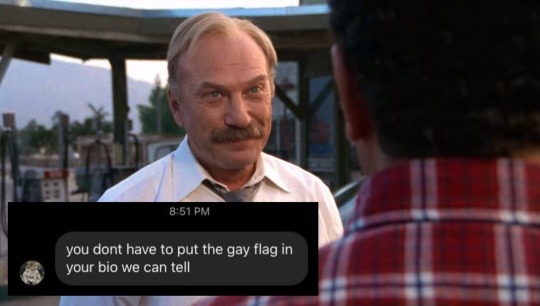
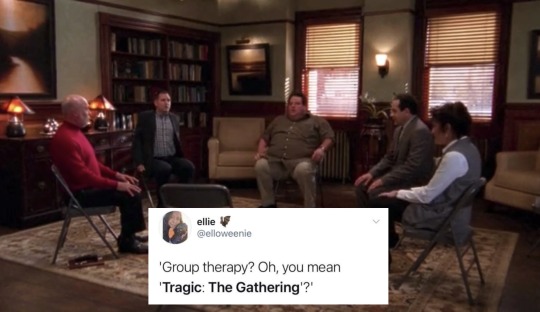
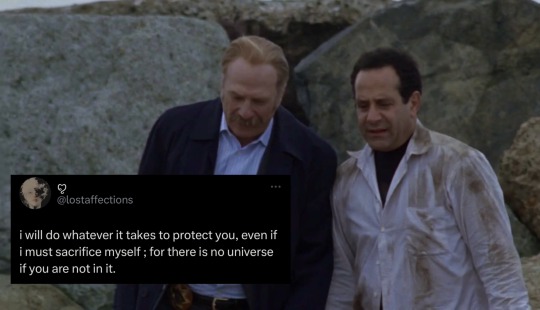
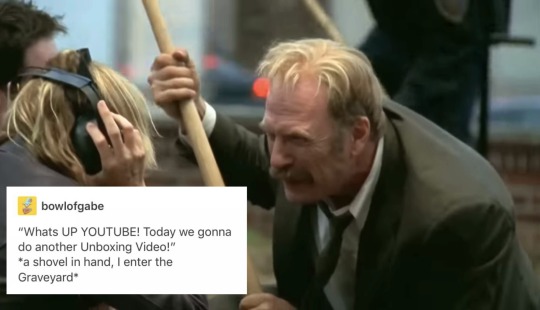
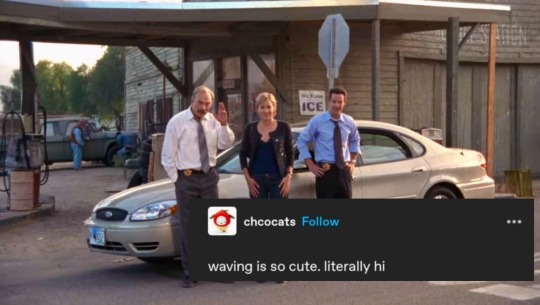
☀️
#monk 2002#adrian monk#leland stottlemeyer#monk 2002 text post#text post#stottlemeyer x monk#stottlemonk
248 notes
·
View notes
Text




✨️.
149 notes
·
View notes
Text








every time i make these i find myself heavily relating to the leland ones
#monk#monk tv show#monk 2002#adrian monk#leland stottlemeyer#randy disher#natalie teeger#sharona fleming#shitposting#shitpost#text posts#text post#my edit#my post#stottlemorgan
154 notes
·
View notes
Text
Why Pope Francis is reviving a long tradition of local variations in Catholic services
http://bit.ly/2fvlXVU
Pope Francis talks with bishops during the Liturgical Week at the Vatican in August 2017. AP Photo/Domenico Stinellis
Pope Francis has changed Catholic Canon law – and met with some intense reactions.
At stake here is the language used for the Mass and the question of who has the responsibility for translating the Catholic liturgy into regional languages.
So why should this issue be so very controversial in the 21st century?
Early history
As a specialist in liturgical studies, I can say that, until the end of the 10th century, local bishops indeed made their own decisions about liturgical practices in their areas.
In the second century, for example, some Christian communities celebrated Easter on the actual date of Passover, while others observed it on the Sunday following that date. A final decision on a uniform date for Easter was not made until after the legalization of Christianity (A.D. 313) by the Roman Emperor Constantine.
Even saints were regional. The first martyrs, venerated by Christians because they died rather than give up their faith, were recognized as saints in their regional Christian churches. Only later did they become part of the wider groups of holy men and women recognized as saints.
Saint Monica Gives Birth to St Augustine. Fr Lawrence Lew, O.P., CC BY-NC-ND
For example, two young women, Perpetua and Felicitas, martyred in the third century, were initially recognized as saints in Carthage in the Roman province of Africa. Later, their names were included in the Roman prayer over the bread and wine at the celebration of the Eucharist (Mass). As that prayer spread throughout Western Europe, their names went with it, and today they remain part of one Catholic Eucharistic prayer.
At the time, regional bishops controlled services to venerate the saints. The story of Monica, mother of a future bishop (St. Augustine) and commemorated herself as a saint, reveals the control of local bishops over customs in their areas. Monica, following North African custom, brought a food offering to a saint’s shrine in Italy, but she humbly obeyed after she was told by the local bishop – St. Ambrose of Milan – that the practice was forbidden in northern Italy.
When the western half of the Roman Empire fell in A.D. 476, regional veneration of local saints expanded. Regional bishops continued to approve petitions and regulate the commemoration of the saints as their predecessors had done. Learned monks made lists of local holy men and women and produced written copies of the stories of their lives.
The first case of a pope canonizing a local saint took place just before the year A.D. 1000.
And this was just the first sign of a new era.
Centralization of church life
During the 11th century, a new succession of reform-minded popes brought in more centralization. By the 12th century, it was popes who canonized saints, and they also had pruned a large number of “non-Roman” prayers from the Mass. This papal movement toward stricter uniformity of practice gained momentum through the later Middle Ages.
Latin, the vernacular, daily language of the ancient Romans, had long since become a learned, “classical” language no longer in common use. However, Latin remained the official language of the Western Church; liturgical rites were performed in Latin, and all of the Church’s legal, business and academic affairs were recorded in Latin.
By the end of the medieval period, a whole system of papal bureaucracy (the Curia) assisted the pope, run by clerical administrators and kept afloat by a detailed structure of fees and donations.
Pope Paul III, 16th century, Toledo Cathedral, Spain. Richard Mortel, CC BY
Movements for a reform of the Church more along the lines of the teaching of Jesus and the apostles became more vocal in the 14th and 15th centuries. These reached a critical intensity with the Reformation in the early 16th century. It was partly in response to these Protestant challenges, Pope Paul III convened the Council of Trent.
In the face of Protestant insistence on using modern vernacular languages (like German and French) for religious services, the Council of Trent called for the promulgation of a standardized “Missal,” the book containing all the texts for the celebration of Mass in Latin (the “Tridentine” Missal, 1570).
This was to be used by Roman Catholics in every part of the world. Each word spoken and each gesture made by the priest was strictly prescribed, and few changes were made over the next 400 years.
Beginning of modern reforms
Until the mid-20th century, then, the Catholic Church was understood as a kind of religious monarchy. The pope was at the top of the pyramid, and cardinals, bishops, priests and nuns on descending levels.
The ordinary laypeople formed the largest, and lowest, layer. Authority and liturgy flowed from the top down.
This static structure was shaken by the advances in technology and communication taking place rapidly during the 20th century. Pope John XXIII, elected in 1958, wanted to make changes so the church could speak to this new, complex world.
A chaplain leads Roman Catholic Mass in the chapel of a ship. Official Navy Page from United States of America MCSN Dean M. Cates/U.S. Marine Corps, via Wikimedia Commons
So he convoked the Second Vatican Council, an assembly of Roman Catholic bishops (and their expert advisers) meant to settle doctrinal issues. And he invited observers from many other Christian churches and denominations. The Second Vatican Council was held between 1962-1965.
The council, with its stress on openness and communication, reformed the Catholic liturgy and approved vernacular translations of a revised Latin Missal. It also emphasized the role of local bishops – just as the Church had been before the 12th century.
Both Catholics and non-Catholics applauded the vernacular liturgical translations as a source of strength for dialogue among the Christian churches. And Pope Paul VI, who presided over the conclusion of the Second Vatican Council, supervised its implementation.
‘The reform of the reform’
Paul VI’s successors, Pope John Paul II and Pope Benedict, however, took a more conservative approach, encouraging the use of the 1962 edition of the Latin-only “Tridentine Missal” (which has become known as the “Extraordinary Form”) and issuing stricter guidelines for preparing vernacular translations of liturgical rites, including those of the Mass (now known as the “Ordinary Form”).
The Tridentine Missal. Fr Lawrence Lew, O.P., CC BY-NC-ND
As the 20th century reached its end, this tendency became known as “the reform of the reform.”
This increasing liturgical conservatism had an impact on the preparation of the recent third edition of the post-Vatican II Missal. English translations of earlier editions were prepared using a more flexible set of directions. This third edition (2002, 2008) had to be translated from Latin into various modern languages, including English, under much stricter guidelines. The prayers were more faithful to the vocabulary and structure of the Latin originals, as a result they became awkward and clumsy in English.
Return to Vatican II
With this recent decision, Pope Francis seeks to reconnect with reforms of Vatican II. He is restoring the role of regional and national conferences of bishops in preparing and approving vernacular translations of the Mass and other rites.
He is also returning to the conciliar vision of reconnecting the modern Church with its ancient and early medieval roots with its stress on “legitimate variations and adaptations.”
But more than that, I argue, he has revived the Council Fathers’ hope for practical, daily reconnection among all Christian churches: when all Protestants and Catholics might use the same English translations and pray in one voice, using the same words.
Joanne M. Pierce serves as a Catholic member of the Anglican-Roman Catholic Consultation in the USA, sponsored by the Episcopal Church and the U.S. Conference of Catholic Bishops.
0 notes
Text







#monk 2002#monk tv#adrian monk#leland stottlemeyer#sharona fleming#randy disher#monk 2002 text post#text post#stottlemeyer x monk#stottlemonk
218 notes
·
View notes
Text



oh, mr. monk
115 notes
·
View notes
Text
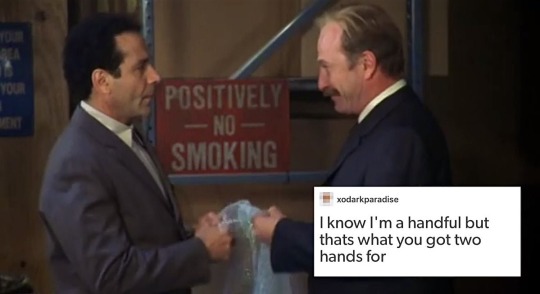


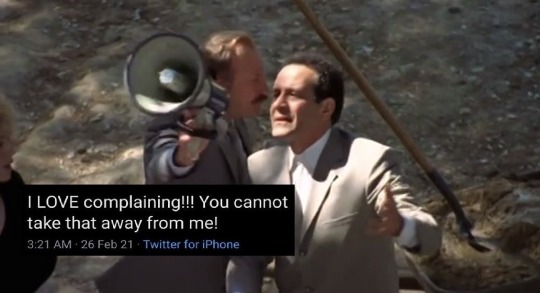
don’t separate them
#stottlemeyer x monk#stottlemonk#monk 2002#monk 2002 text post#text post#leland stottlemeyer#adrian monk
134 notes
·
View notes
Text
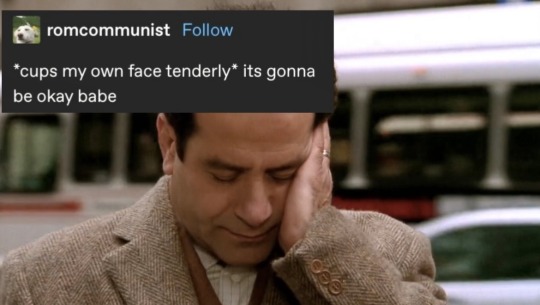
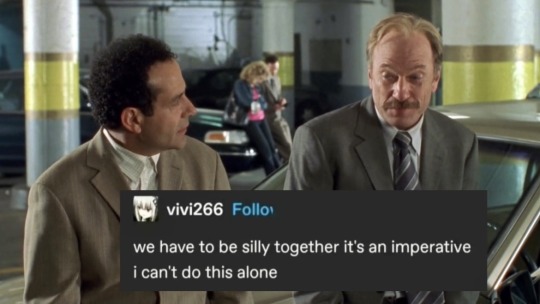
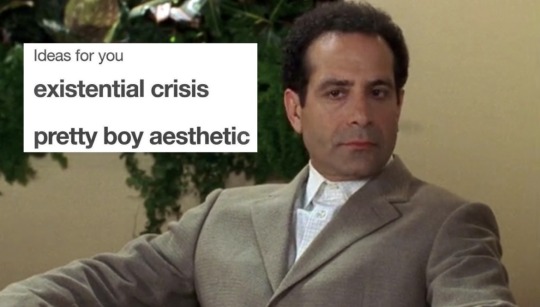

#monk 2002#adrian monk#leland stottlemeyer#monk 2002 text post#text post#stottlemonk#stottlemeyer x monk
115 notes
·
View notes
Text


🌼🌹🌼🌹
#monk 2002#monk 2002 text post#text post#monk tv#leland stottlemeyer#adrian monk#stottlemeyer x monk#stottlemonk
81 notes
·
View notes